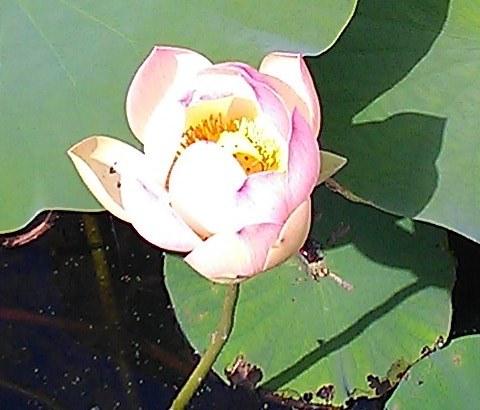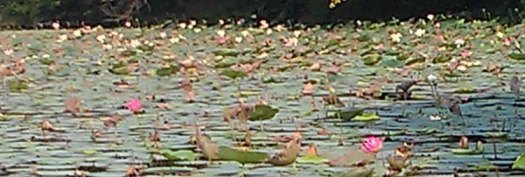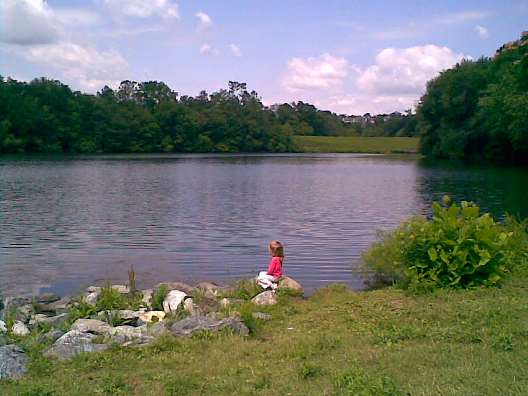 Since I have been working with this method of allowing my challenging feelings, rather than fighting or discrediting them, I can tell you a few things about it. First, this process is not necessarily a magic wand that makes all bad things good. Well, not immediately, anyway. But when I use it for headaches, for example, and really breathe while focusing my awareness in the areas of the pain, the pain moves. Sometimes it moves to another part of my body, then lifts and the headache lessens or goes away for a while. For emotional states, I have found that when I get myself feeling better in my body, I have easier access to better-feeling emotions.
Since I have been working with this method of allowing my challenging feelings, rather than fighting or discrediting them, I can tell you a few things about it. First, this process is not necessarily a magic wand that makes all bad things good. Well, not immediately, anyway. But when I use it for headaches, for example, and really breathe while focusing my awareness in the areas of the pain, the pain moves. Sometimes it moves to another part of my body, then lifts and the headache lessens or goes away for a while. For emotional states, I have found that when I get myself feeling better in my body, I have easier access to better-feeling emotions.
Secondly, this process of allowing seems to have brought about a greater general feeling of self-acceptance. When I become upset with my girls’ fighting, for instance, I have more empathy for myself. This feels so much better than getting upset at myself for getting upset!
And the third observation I will note is that this practice has made it possible for me to allow my kids’ more difficult emotions, as well. I hope that this allowing, and my modeling self-acceptance, will help my girls to understand the validity of their emotions too. Instead of jumping into fix-it mode, I try to remember to first establish a connection through empathy. Child development experts tell us that this process helps kids’ brains go from alarm to reasoning, just as when we acknowledge and connect with our own feelings. Then, with the “thinking brain” online, kids are better able to learn and problem-solve. All parents know that tantrums are not teachable moments! This is probably a whole other blog post, but I wanted to touch on it here to illustrate how powerful allowing and acceptance can be.
Reaching out
Over the past year, I have been collaborating with my teacher, colleague and dear friend, Dee Gold, of Inner Reaches Yoga and Health. We’ve been working to structure and refine this process for using the mud to nourish the flower… using our challenging feelings to nourish our physical and emotional wellbeing. Dee and I have developed a curriculum we’re calling “Nourishing the Soul: Employing the Intention-Awareness Method (I-AM).” We have been offering some pilot test classes this summer and will launch the official curriculum in a half-day workshop in January 2014. I’ll announce details here on this blog when the date and time are finalized. (In the meantime, if you are ready to dive into some mindfulness training, Tara Brach is offering some day-long retreats in Rockville, MD this fall: True Refuge, and Pathways to Sacred Presence).
I’m wondering what questions you have, and whether you’ve tried any of this. Do you have any reflections of your own to share? If so, please click on “Leave a comment” above and we can keep the conversation going.
Finding the “yes’s”
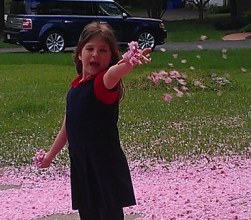 Yes, when I am actively present, I can draw my murkier feelings through my body, bless them, and allow this process to feed the places that want to bloom. Noticing and allowing what is holds us in the current moment, opening us to both healing and joy.
Yes, when I am actively present, I can draw my murkier feelings through my body, bless them, and allow this process to feed the places that want to bloom. Noticing and allowing what is holds us in the current moment, opening us to both healing and joy.
In writing, as in yoga, I find that I need to be in a state of noticing, and to stay in touch with my emotions, to express what is true and to connect with you as a reader. Both yoga and writing are about paying attention and finding the yes’s we can open to in every moment.
It is in this spirit that I offer my first blog series… if you found some inspiration in here somewhere, please share this and help me to get the word out. (I promise they won’t all be this long!) And if you can, please come to one of my yoga classes or workshops. At the end of class, we’ll rise after deep relaxation, nourished by the practice, and we’ll say to each other with our eyes, “Is it nice?”

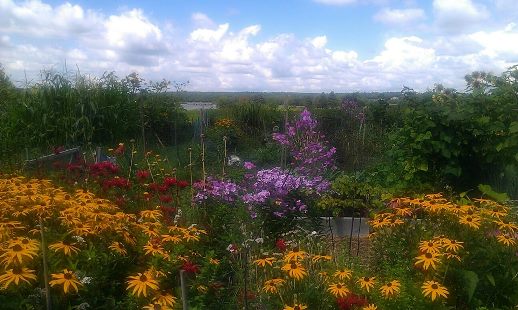
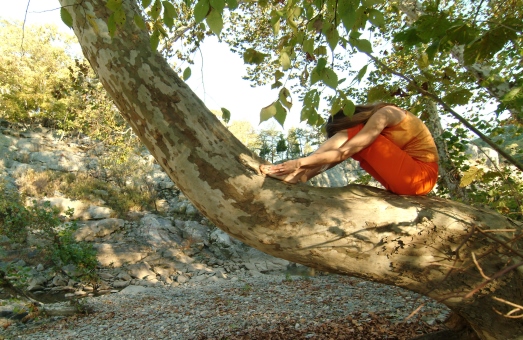

 In her book,
In her book, 